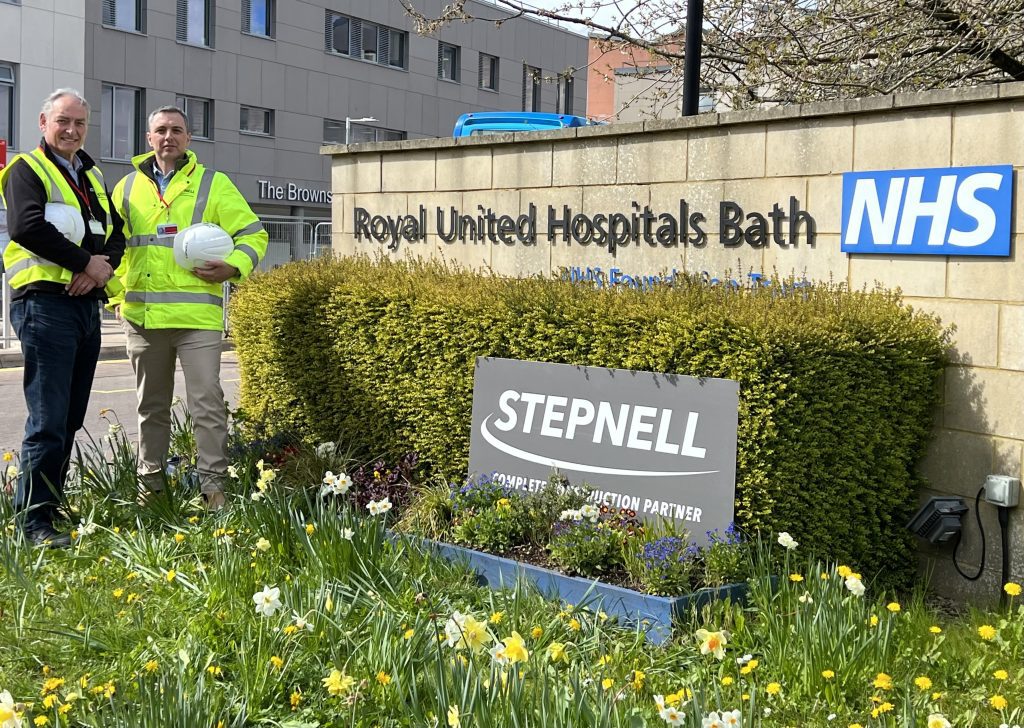Design and construction of 28 en suite bed bays and side rooms
CLIENT: Royal United Hospital Bath NHS Foundation Trust
PROGRAMME: 36 Weeks
VALUE: £2.06 million
FRAMEWORK: Procure Partnerships Framework
The Royal United Hospitals Bath NHS Foundation Trust provides acute treatment and care for a catchment population of around 500,000 people in Bath, and the surrounding towns and villages in North East Somerset and Western Wiltshire. The Trust occupies a 52-acre site about 1½ miles from Bath city centre and became a National Health Service Trust in 1992.

During Covid the Trust found dedicated facilities for bed bays provided better infection control and operational flexibility to isolate bed-bays rather than entire wards. After consultation with front-line staff the Trust had committed to adopt this model across four wards within the hospital.
The result was a project for the design and construction of 28 ensuite bed bays and side rooms, including ancillary works drainage and services.
Upon commencement of stage 2, the full RIBA Stage 1 design was completed with RIBA Stage 2 in progress and Stepnell were responsible for progressing the design development from RIBA Stage 2 onwards. The client team selected the design team due to their knowledge of the RUH Estate.
Key issues that the client wanted to work with the contractor to overcome in the second stage were:
- Most efficient sequencing of the works to minimise disruption whilst achieving an efficient build.
- Site logistics for access/deliveries to the works
- Location of ensuites within the wards to provide the simplest installation.
We were conscious that clinical staff would be adverse to any impact on service which would lead to work restrictions/compromises with resulting cost increase due to inefficient working. Because the rearrangement of wards was significant with no obvious way to do works and provide quality healthcare it was inevitable as scope increased, the budget came under pressure.
After each engagement session we provided RUH with a schedule of items that would impact on cost for their ratification along with suggestions as to where workable compromises to save money could be proposed. This enabled RUH to prioritise which works to include/remove or continue that suited their critical evolving needs of the hospital including recognising their would be pressure on bed spaces over the winter months as works progressed.
Both Stepnell and the Trust recognised we would need to react to the needs of the hospital as healthcare needs changed whilst we were on site. We formulated a daily Short Interval Control plan where we had daily inductions with our team, supply chain and Trust staff to explain the plan for the day, and clarifying permit to work regime. At the end of the day this team reconvened to affirm we had done what we expected to. If not, we discussed how the plan for the next day would need to be changed. At the meeting the next morning we formalised the change so the client could sign-off the impact.
To test the effectiveness of this plan we trialled a pilot project which was successful, enabling us all to be comfortable with the plan going forward.
Works were to be carried out in the four wards simultaneously. Each ward had four sub phases.
The programme has constantly been adaptable and supportive of the needs of the hospital. Works were to be carried out in the four wards simultaneously, with the works within each ward to be phased to minimise disruption at any one time to limit the number of beds out of action at any one time. Only one bay and two side rooms could be out of action at any one time in each ward.
Through weekly meetings we provided RUH with accurate cost updates whilst the design was evolving and in line with the phasing of the works. It became apparent that the project was going over budget because the scope increased and these weekly meets gave all an understanding of where the cost was going and which element/section/ward. This helped RUH prioritise which works to include/remove or continue that suited their critical evolving needs of the hospital.
Completed in just 23 weeks, we achieved 24 handovers on the programme.
We ensured local supply chain spending and engaged with a local supply chain of subcontractors wherever possible.

